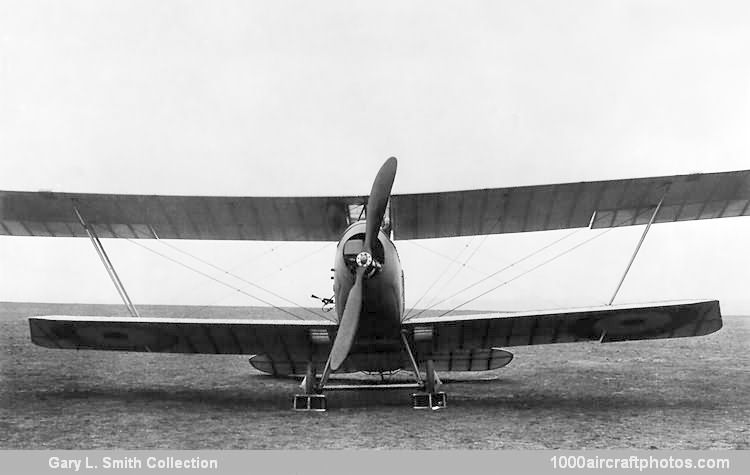09/30/2012. Remarks by Johan Visschedijk: "In 1916 Vickers produced the F.B.14 general-purpose single-engined tractor biplane of smaller dimensions than those of the F.B.11, but bearing obvious Howard Flanders influence, such as the single-bay wing cellule with a larger top wing and splayed-out struts. Its steel-tube fuselage followed the early pattern derived from the R.E.P. type monoplane, and this feature created official interest, and on structural test at Farnborough it disclosed good strength factors.
Although intended for the 200 hp Beardmore-Halford-Pullinger engine (later to become the 230 hp Siddeley Puma), the F.B.14 was powered with the 160 hp Beardmore, which itself was proving unreliable enough for it to be replaced by the older 120 hp Beardmore. Thus once more the bogey of underpower appeared, and although 100 airframes were built at Weybridge, only relatively few ever received suitable engines. Intended as replacement for the RE.2c, RE.2d or B.E.2e in Middle East squadrons, an indefinite number of F.B.14s were reported as sent to Mesopotamia and seven are known to have been used by Home Defence squadrons.
Other variants to materialize were the F.B.14A with a 150 hp Lorraine-Dietrich, the F.B.14D with a 250 hp Rolls-Royce and the F.B.14F with a 150 hp Raf 4a, an twelve-cylinder air-cooled V-engine which was the standard power unit for the R.E.8 general-purpose aeroplane. The F.B.14D with the Rolls-Royce engine had increased span with two-bay wings, and on test at the new experimental aerodrome at Martlesham Heath, near Ipswich, it recorded a speed of 111.5 mph (179.4 kmh).
Later it was used for gunnery trials at Orfordness on the Suffolk coast, fitted with a Vickers gun firing forwards and upwards at 45° and two Lewis guns firing rearwards, one under the tail. With an experimental periscopic gunsight for the pilot, the Orfordness F.B.14D chased a hostile raid back to the Belgian coast in July 1917, and obtained an unconfirmed victory over a Gotha bomber, which was seen to go down in the sea off Zeebrugge."
